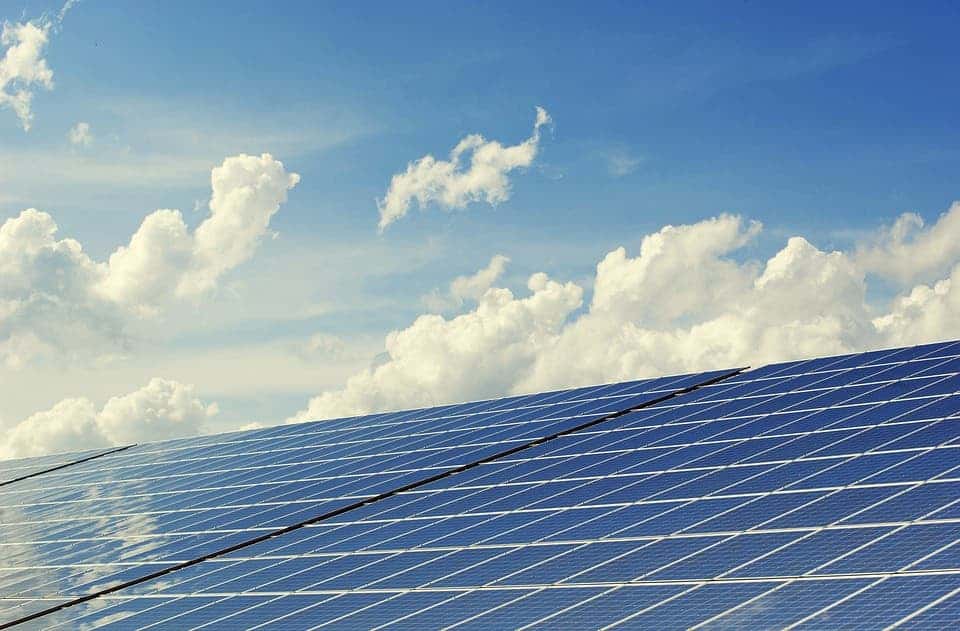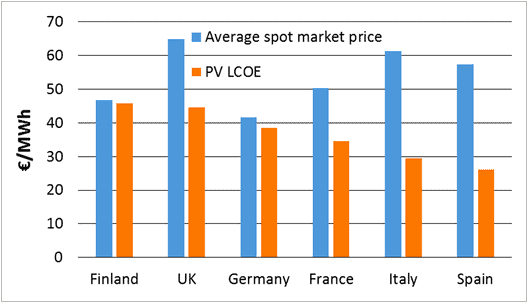Solar has had a fantastic track record so far, having achieved a 90% reduction in cost over the last decade — and it doesn’t show any sign of stopping
A new report released by researchers at the Lappeenranta University of Technology in Finland found that solar energy is cheaper than spot wholesale electricity prices in many European cities and nations. What’s more, even when adding up to two hours of storage, solar is still competitive with the average wholesale electricity spot market (WESM) price.
WESM is a venue for trading electricity as a commodity, serving as a clearinghouse to reflect the economic value of electricity for a particular period, as indicated by the “spot price”.

The researchers led by Christian Breyer, a professor of solar economy at Lappeenranta, analyzed the levelized cost of electricity (LCOE) of solar energy — meaning the average cost of electricity when taking into account capital expenditure, operations, storage, and other factors — and compared it to wholesale electricity prices in various European markets.
The findings were astonishing, suggesting that the LCOE of photovoltaic (PV) solar energy is already cheaper than most average spot market prices, ranging from only €24/MWh ($26/MWh) in sunny locations like Malaga (Spain) to €42/MWh ($46/MWh) even in cloudy Helsinki (Finland).
In the graph below, you can see how the LCOE of solar beats the average spot market price in many European countries — and by quite a considerable margin in places like Italy and Spain which are generously bathed in sunlight.

The price difference is much smaller in Germany, but that’s because the country has 40% of its energy share coming from renewables, and thus already had a very low spot price. But even here, the LCOE of solar is more economically advantageous.
Solar remains competitive even when factoring storage costs of up to two hours, ranging from €54/MWh ($60/MWh) in Malaga to €95/MWh ($105/MWh) in Helsinki — and the cost is projected to plunge even deeper.
The report estimates an LCOE of solar ranging from €14-24/MWh ($15.5-$27/MWh) in 2030 and €9-15/MWh ($10-16.5/MWh) in 2050 — that’s peanuts compared to the current average wholesale electricity price.
If solar is so advantageous, why aren’t we investing more in it? The authors of the report state that the rate of advances in PV and storage technologies is so fast that policymakers haven’t kept up — they’re simply working with outdated figures, the researchers argue.
“This proves that it is of utmost importance for the solar PV industry to convince the financial community that utility‐scale PV is a safe and profitable investment. Policy makers need to be informed that PV is the cheapest form of electricity, especially if its inherent low economic, technical, and environmental risks are taken into account. In addition, it has to be highlighted that the high dynamics in the solar PV industry has led to PV CAPEX and PV LCOE levels not yet well reflected in literature and major reports typically taken into account for decision making. PV plus batteries are the cornerstones of the future energy system if we wish to tackle the climate crisis in a fast and cost‐neutral way,” the authors concluded.


